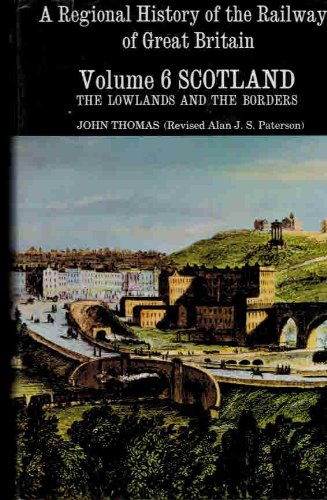Tranent Waggonway
Introduction
This 1722 waggonway ran from pits by the village of Tranent chiefly on a falling gradient to Cockenzie Salt Pans and Port Seton, a distance of around 2 miles. The rails were originally timber and the sleepers were stone. It was a single track line with two passing places along its length. The route crossed over very difficult marshy ground around Meadowmill, to the north of Tranent, on an embankment. Horses and gravity provided the motive power. This former waggonway may be the oldest in Scotland.
It was built for the York Buildings Company, which had bought lands forfeited after the failure of the 1715 Jacobite rising such as the Winton estate including the coal pits of Tranent and salt pans of Cockenzie.
There was a further Jacobite connection. More than twenty years after its opening it featured in the Battle of Prestonpans of 1745, the embankment being used by Government commander John Cope as a defensive line (the area known as Johnnie Cope's Hole) against the Jacobite army of Charles Edward Stuart.
Cockenzie Harbour was substantially rebuilt by the Cadells of Cockenzie in 1732 and the eastern quaysides and breakwater were rail served. The much later Ordnance Survey Name Book of 1853 notes that 'its entrance is clear and of easy access, from hence coals are ship'd to England, France, Germany, Portugal and the northern parts of Scotland.'
By the 1780s the waggonway was in use by the John Cadell of the Carron Company, who now owned the estate, and was not long afterwards relaid with iron edge rails. The southern portion was extended from Tranent Colliery to various pits, such as Windygoul Colliery, on their opening.
With the building of railways the northern portion progressively fell out of use and a competing route came into existence (a short branch of tramway standard was laid around 1849 from the North British Railway to to Tranent Goods, reaching Windygoul Colliery) via a tramway. More helpfully Meadowmill Exchange Sidings were laid where the waggonway crossed the main line, here wagons could be tipped into railway wagons..
The North British Railway relaid its Tranent to Meadowhill tramway in 1886 to become their Tranent Branch (North British Railway). Much of the waggonway was dismantled north of Meadowhall and the southern portion was relaid as a railway. The Windygoul Colliery mineral line (at the south end and to the east of Tranent) was extended as far as Fleets Colliery (Fleets Colliery Extension (Tranent Waggonway)), another mineral line ('Bog Siding') taking this as far as Bog Siding Signal Box on the Macmerry Branch (North British Railway).
The bridge by which the waggonway crossed the East Coast Main Line was removed but its abutments remained until electrification works.
The northern end of the much later Prestonpans Power Station Branch (British Rail) to Cockenzie Power Station paralleled a short portion of the waggonway, the newer alignment being a little to the west.
Some of the waggonway's embankment remains as a walkway today and stone sleepers remain at Cockenzie Harbour. Wemyss Place, High Street, School Lane occupy the Port Seton portion of the waggonway. West Harbour Road and East Lorimer Place are on the approach to Cockenzie Harbour. Avenue Road, and the B6371 occupy much of the northern portion of the trackbed. The portion of walkway from the B6371 to the East Coast Main Line was not converted into a modern railway and comprises the largest waggonway era portion. South of this the line continued round the eastern side of Tranent, much remaining as a footpath. The original route terminated around Kingslaw. Most of the portion on to Windygoul is built over with houses and some modern roads follow a similar course to the waggonway.
Dates
| / /1722 | Tranent Waggonway Opened from Tranent pit to Port Seton. (A single track line with wooden rails and two passing places.) |
| 21/09/1745 | Tranent Waggonway Battle of Prestonpans fought by the waggonway the embankment of which was used for John Cope's cannons. |
| / /1779 | Tranent Waggonway Taken over by John Cadell of the Carron Iron Works. |
| / /1815 | Tranent Waggonway Iron rails used to replace wooden ones. |
| / /1850 | Fleets Pit (Tranent) Opened by R&J Durie Ltd. Served by an extension of the Tranent Waggonway. |
| / /1870 | Tranent Waggonway Tranent Colliery to Meadowhill only in use. |
| / /1880 | Fleets Pit (Tranent) Re-opened, transferred to Edinburgh Collieries Ltd. Served by the remaining railway standard section of the Tranent Waggonway which re-opens. |
| / /1886 | Tranent Waggonway Tranent Colliery to Meadowhill taken over by the North British Railway, Meadowhill to Port Seton dismantled. |
| / /1959 | Fleets Pit (Tranent) Closed. Meadowhill to Fleets of the Tranent Waggonway closed. |
Portions of line and locations
This line is divided into a number of portions.
Port Seton to Tranent
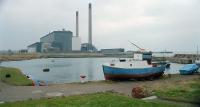
Ewan Crawford //2002
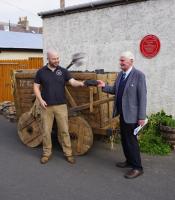
John Yellowlees 21/09/2020
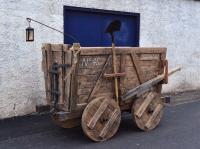
Bill Roberton 16/02/2019
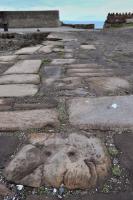
Bill Roberton 16/02/2019
This bridge was opened in 1846 to allow the North British Railway to pass under the much older Tranent Waggonway.
...
See also
North British Railway
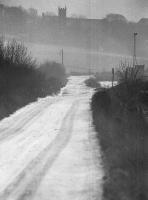
Bill Roberton //1973
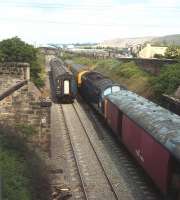
Bruce McCartney /05/1980
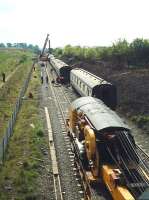
Bruce McCartney //197X
A siding was laid on the south side of the North British Railway immediately west of where the Tranent Waggonway crossed overhead. The siding was approached from the west. A short curved branch was laid from the Tranent Waggonway which turned through 90 degrees from going north to west and ran parallel to the railway siding. Wagons were tipped from above onto railway wagons. With the ...
More detailsSee also
North British Railway
Windygoul Extension
Bank Park
A short link is shown on Airey's railway map of 1875 between near the Meadowmill Exchange Sidings and Bank Park on the Tranent Branch (North British Railway).
A siding was laid on the south side of the North British Railway immediately west of where the Tranent Waggonway crossed overhead. The siding was approached from the west. A short curved branch was laid from the Tranent Waggonway which turned through 90 degrees from going north to west and ran parallel to the railway siding. Wagons were tipped from above onto railway wagons. With the ...
More detailsSee also
North British Railway
Books










